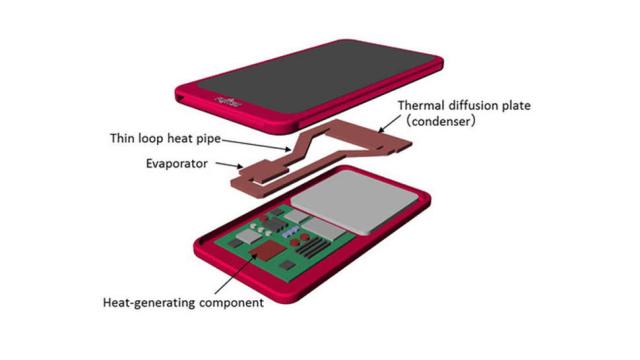Are you worried about the classic hot smartphone problem? Into overclocking your pocket PC? If you are, you’ll be thrilled about Fujitsu’s new technology for a liquid-cooled smartphone. It’s a bit like putting your car’s radiator into your phone — a cool idea even if you probably wouldn’t need it.
Fujitsu’s new “loop heat pipe” transfer system would attach to a smartphone or tablet’s CPU. The rig is less than one millimetre thick but would still be able to pump a liquid coolant through your phone’s guts to dissipate heat. The company explains:
A working fluid is encapsulated inside this closed loop as a coolant. The heat from the heat source evaporates the coolant, and the energy that goes into evaporating the coolant is taken away from the heat source, lowering its temperature. It is based off of the same principle used when sprinkling water on pavement to reduce heat.
Sounds pretty cool! In theory this is supposed to improve your phone’s performance without any additional drain on the battery power. The thing is, smartphones pretty much already perform preeeeeety well without overheating too bad, unless you’re trying to do VR or something. And the chips that run them are only getting more efficient as time goes on.
The hypothetical idea that we’re gonna need hulking, hot processors to keep texting our friends isn’t too convincing. But if we do someday need to cool off phones the same way we cool off high-end gaming PCs, it’s good to know there are options out there. [Fujitsu via ZDNet]
Picture: Fujitsu
